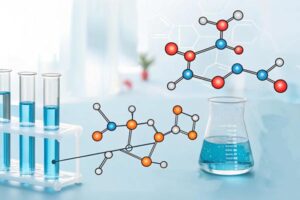Introduction
Polyethylene terephthalate, commonly referred to as PET, plays an integral role in our daily lives, serving as the primary material for the production of bottles, fibers, and a wide range of plastic products. However, PET’s vulnerability to hydrolysis has emerged as a critical concern within the context of sustainable plastic recycling and degradation. Hydrolysis of PET can result in a deterioration of material properties and a reduction in product lifespan. In this article, we will delve into the concept of hydrolysis, its underlying causes, the implications it carries, and strategies for mitigation, with a particular focus on the application of hydrolysis inhibitors.

1. Understanding Hydrolysis of PET
Hydrolysis is a chemical reaction that involves the breaking of chemical bonds, typically occurring in the presence of water. In the case of PET, hydrolysis entails the cleavage of ester bonds within its molecular structure, leading to the formation of terephthalic acid and ethylene glycol. This process induces alterations in the molecular configuration of the material, subsequently affecting its overall performance and stability.
2. Causes of PET Hydrolysis
PET hydrolysis can be attributed to various factors, with some of the primary contributors being:
- Effect of Water and Humidity: Water molecules possess the ability to permeate PET material, thereby instigating the cleavage of ester bonds. Environments with higher humidity levels can accelerate this process.
- Elevated Temperatures: Elevated temperatures can expedite hydrolysis reactions, making them more likely to occur during PET processing or when the material is exposed to high-temperature conditions.
- Acid Catalysis: The presence of acidic substances can act as catalysts for hydrolysis reactions, thus promoting the degradation of PET.
3. Implications of PET Hydrolysis
The consequences of PET hydrolysis are multifaceted and of significant concern:
- Industrial Yarn Breakage: In industrial applications, PET fibers and yarns are susceptible to breaking due to the weakening of molecular bonds caused by hydrolysis. (See application of anti-hydrolysis agent in PET monofilament )
- Reduced Product Lifespan: Products fabricated from PET, such as bottles, packaging materials, and outdoor textiles, may experience a shortened lifespan due to the deterioration of material properties.
- Diminished Physical Performance: Hydrolysis can compromise PET’s mechanical and thermal properties, impacting its suitability for various applications.
4. The Role of Hydrolysis Inhibitors in PET
To counter the challenges posed by PET hydrolysis, the utilization of hydrolysis inhibitors, or anti-hydrolysis agents, assumes a pivotal role in preserving the longevity and performance of PET-based products. These inhibitors play a crucial role in stabilizing PET, protecting it from the adverse effects of hydrolytic degradation. By impeding the hydrolysis reaction, they help maintain the material’s structural integrity, thus extending the lifespan of PET products. Whether in the manufacturing of industrial yarns, packaging materials, or other PET-based applications, the incorporation of hydrolysis inhibitors has become a fundamental practice aimed at enhancing the sustainability and reliability of PET materials across diverse industries. See more about application of anti-hydrolysis agent in PET
Conclusion
In conclusion, PET hydrolysis stands as a pertinent concern within the realm of plastics, given its potential to adversely affect product integrity and lifespan. A comprehensive understanding of the causative factors and the ensuing implications is imperative for the development of effective mitigation strategies. Hydrolysis inhibitors, with their distinctive mechanisms, offer a promising avenue for prolonging the durability and sustainability of PET-based products. As we collectively strive toward more sustainable plastic recycling and usage, addressing the challenges associated with PET hydrolysis assumes an increasingly imperative role in reducing waste and extending the useful life of products.






